Lease abstraction is an essential process in the real estate industry, enabling professionals to extract critical information from complex lease documents efficiently. With AI, businesses can now automate this process, saving time and minimizing manual errors. In this blog, we’ll explore how to automate lease abstraction with AI, making it easier to access important lease information quickly.
- Understanding Lease Abstraction with AI
- Setting Up Your AI Agent
- Importing Documents
- Defining Extraction Parameters
- Receiving Extraction Results
- Complex Data Extraction and Calculations
- Improving Output Formats
- Calculating Total Lease Obligations
- Batch Processing Multiple Documents
- Automating Document Management
- Exporting and Utilizing Extracted Data
- Conclusion: The Future of Lease Abstraction with AI
Understanding Lease Abstraction with AI
Lease abstraction involves summarizing key terms and provisions from lengthy lease documents into a concise format. This can be a tedious task, especially when dealing with multi-page documents filled with intricate details. AI automates this process, allowing professionals to focus on strategic decision-making rather than getting bogged down in paperwork.
Setting Up Your AI Agent
To start, let’s dive into the creation of an AI agent specifically designed for lease abstraction. The first step is to access the Kolena agent homepage and create a new agent. Here, you’ll need to specify the objective of the agent, which in our case is to extract key information from a commercial lease agreement.

Once you click on “Create New Agent,” you’ll be prompted to name your agent. For our purposes, let’s call it the “Commercial Lease Abstract Extractor.” This name reflects its primary function and will help in identifying the agent later on.
Importing Documents
Next, we need to import the lease documents that the AI will analyze. You can import various file formats, including PDFs, images, and even text files. For this demo, we’ll drop in a multi-tenant office lease PDF, which will serve as our template for extraction.

Once the document is uploaded, the AI will begin to process it. This lease document may be four pages long, but lease agreements can often extend to dozens of pages, filled with critical information that needs to be summarized.
Defining Extraction Parameters
Now that we have our document, it’s time to specify what information we want to extract. Using natural language, we can instruct the AI to find specific details. For example, we might ask, “Who is the lessee?” or “What type of lease is this?”
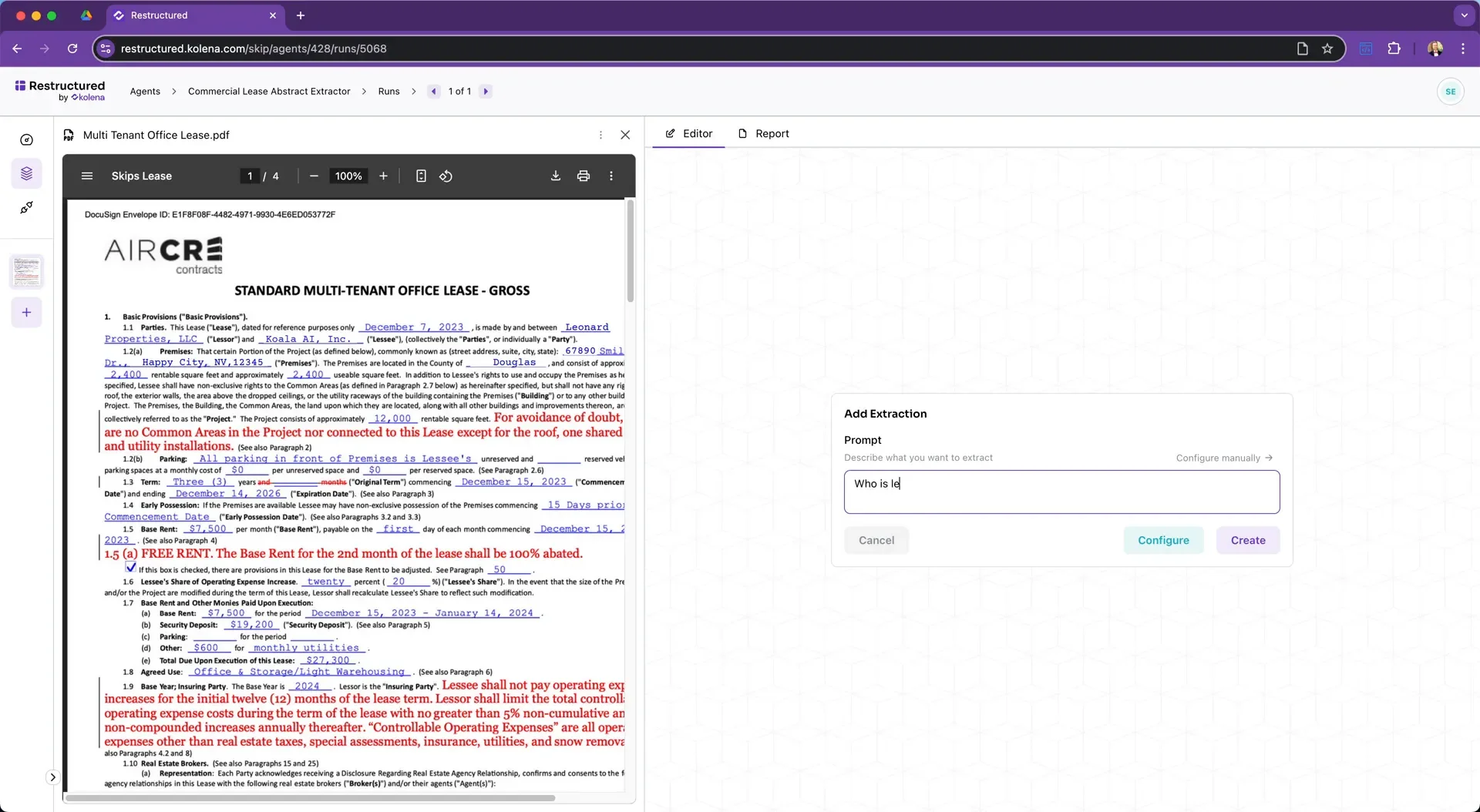
The AI uses prompt engineering techniques to refine our request, ensuring it knows we’re looking for a tenant company or individual signing the lease agreement. This process is intuitive, so you don’t need to be a tech wizard to get it right.
Receiving Extraction Results
As the AI processes the requests, it will return results for each parameter specified. For instance, it may identify “Koala AI Incorporated” as the lessee and determine that the type of lease is a gross lease. Each result comes with a reasoning section, explaining how the AI derived the information, which enhances trust in the data provided.
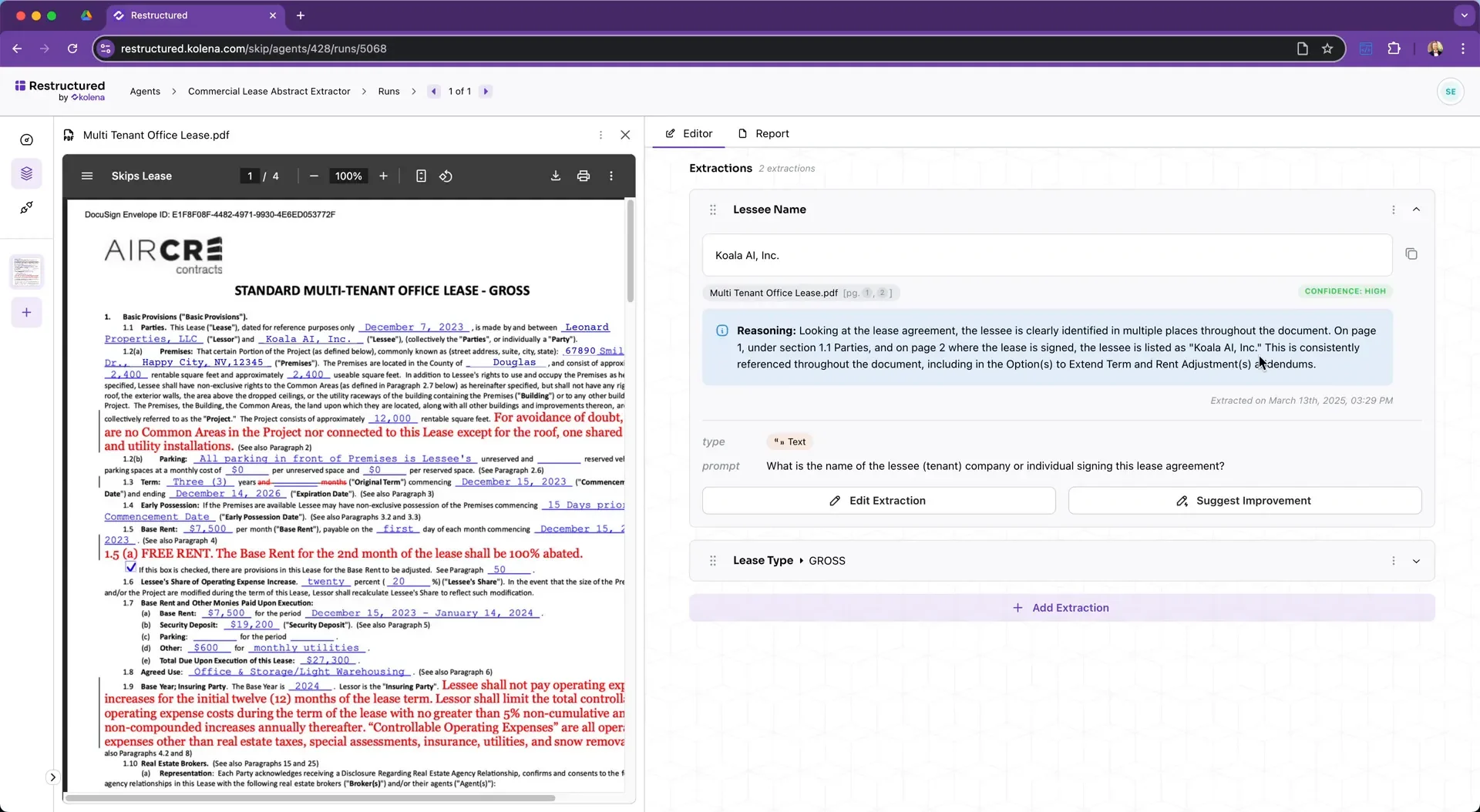
Complex Data Extraction and Calculations
But the capabilities of lease abstraction AI go beyond simple extractions. Let’s say we want to know the base rent and escalation schedule. The AI can analyze the document to identify these figures and provide a clear summary.
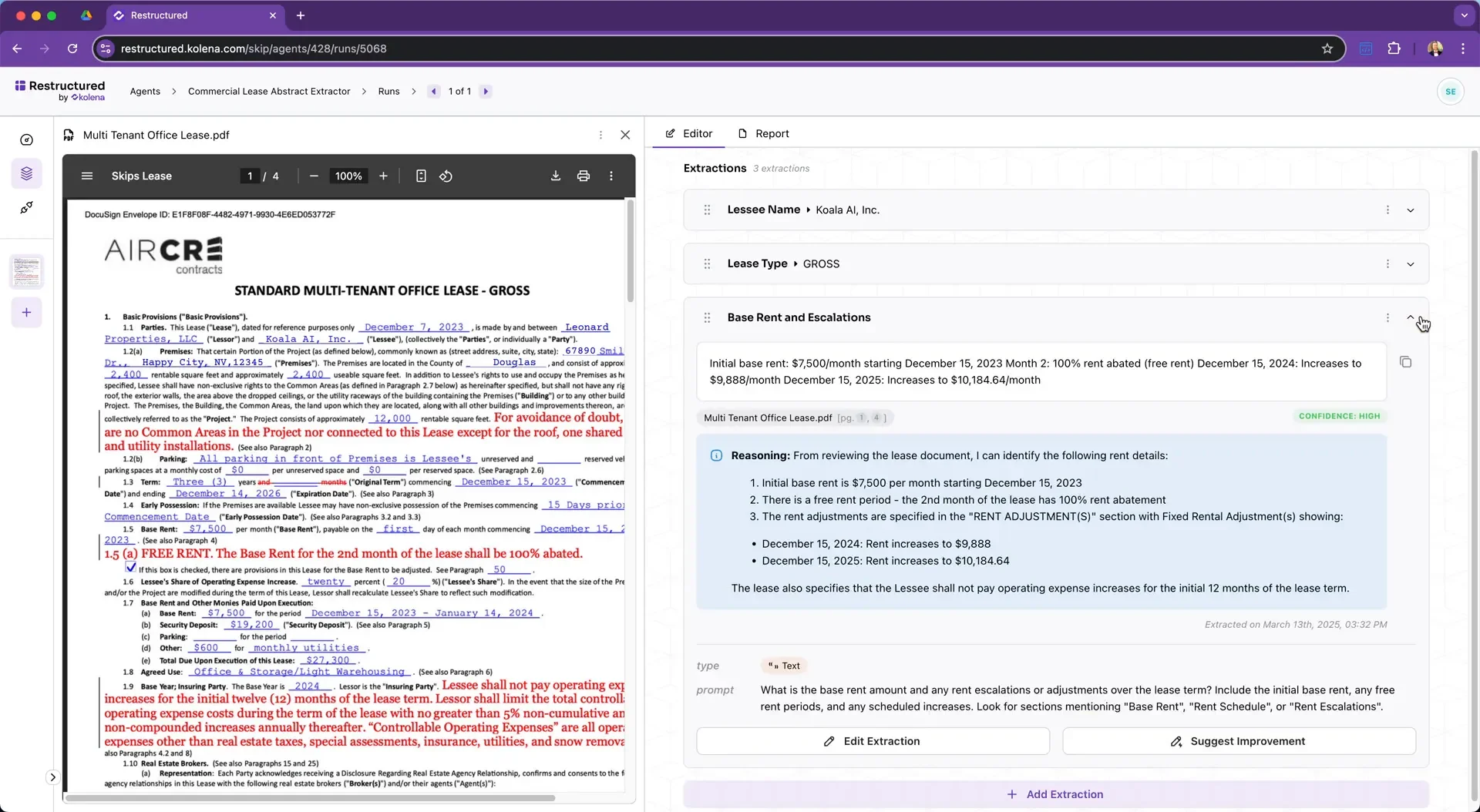
In this example, the base rent is identified as $7,500, with specific terms for free rent in the second month. The AI also recognizes when rent increases occur, providing a comprehensive overview of the financial obligations under the lease.
Improving Output Formats
What if you want the information in a more structured format, like a table? Simply suggest this improvement in natural language, and the AI will reformat the output accordingly, making it easier to digest and analyze.

Calculating Total Lease Obligations
For more complex scenarios, you might want to calculate the total remaining lease obligation from a specific date. The AI can handle this by considering various rate schedules and generating calculations based on the lease terms.
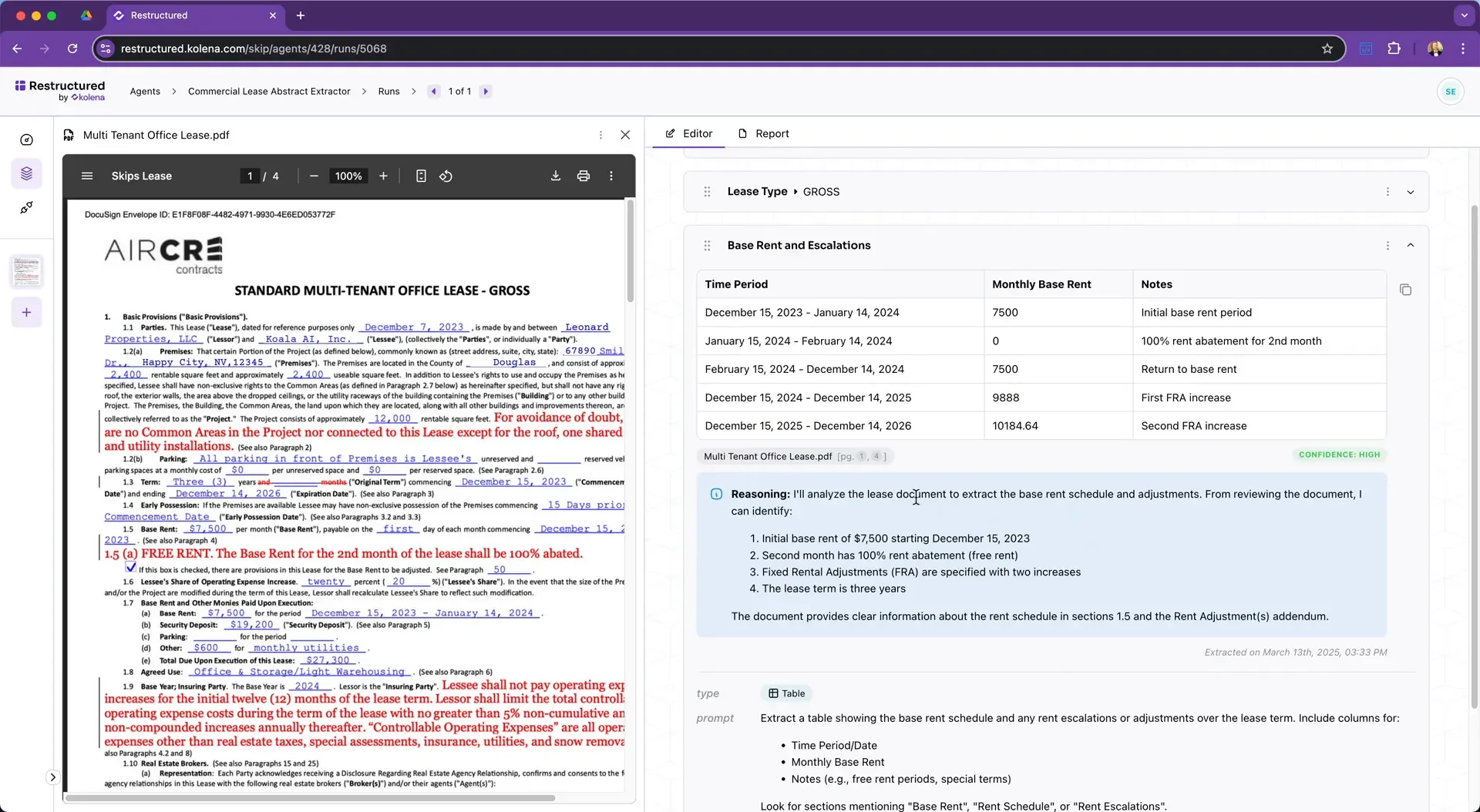
In just a few seconds, the AI provides a detailed breakdown of the total obligations, complete with all the mathematical calculations it used to arrive at the result. This automation removes the manual labor often associated with such tasks.
Batch Processing Multiple Documents
Once you’ve set up your agent, it can process multiple lease documents at once without requiring you to input the same parameters repeatedly. This is a game changer for real estate operations, allowing you to efficiently manage numerous leases with consistent accuracy.

Automating Document Management
To take it a step further, you can connect your AI agent to a data source, like a Google Drive folder, for automatic processing of new lease documents as they arrive. This means you can set up a system where the AI continuously monitors a folder and extracts information from newly added documents without any manual intervention.
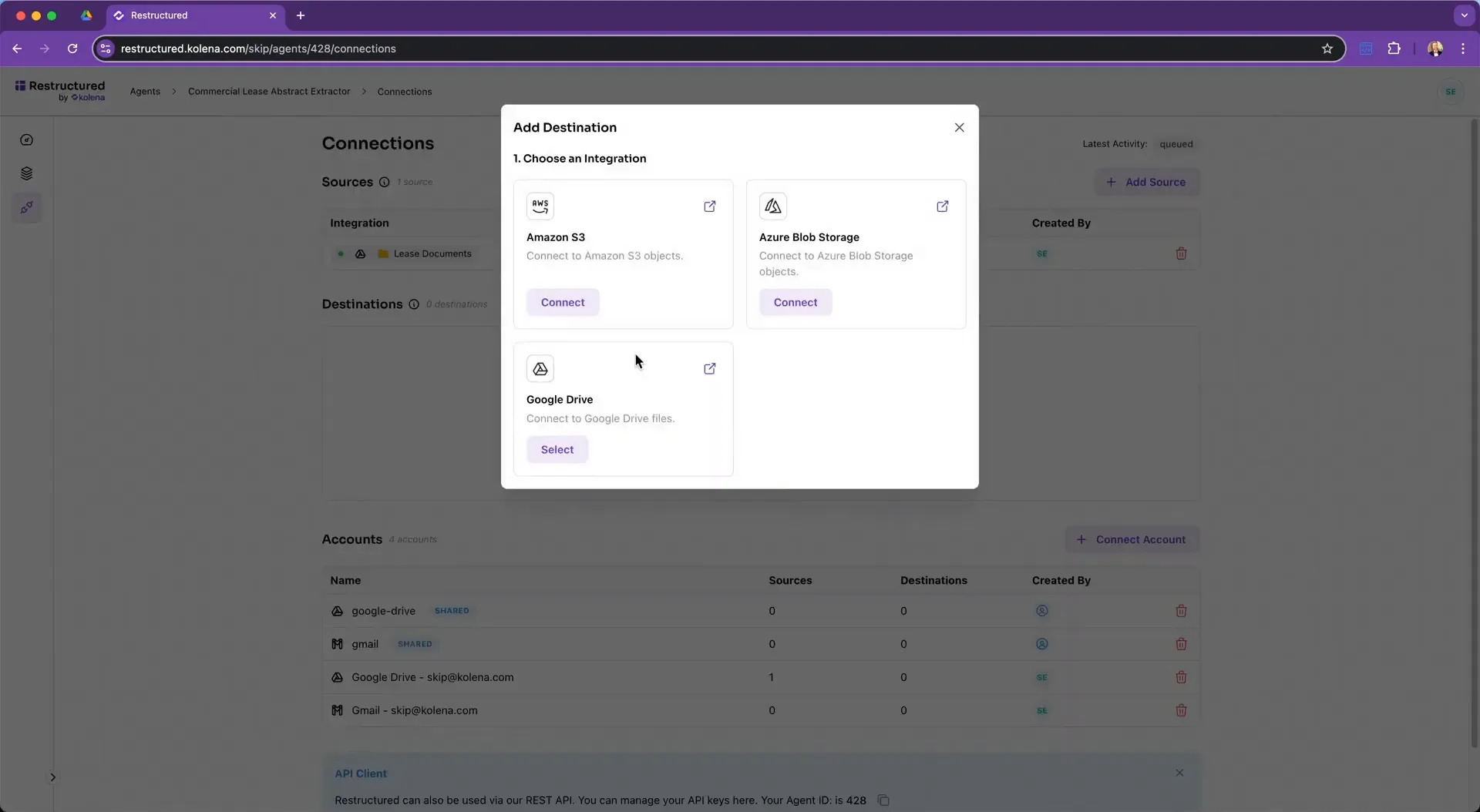
Exporting and Utilizing Extracted Data
After processing, the extracted data can be exported in various formats, such as CSV, making it easy to integrate into other tools for analysis or record-keeping. This seamless transition from document to actionable insight enhances operational efficiency across the board.

Conclusion: The Future of Lease Abstraction with AI
With the powerful capabilities of lease abstraction AI, businesses can automate the tedious process of lease analysis, saving time and reducing errors. By creating a tailored AI agent, professionals can streamline their operations, allowing for more focus on strategic decision-making and less on paperwork.
Whether it’s for lease management, contract analysis, or any other document-intensive process, the potential applications of AI in this space are vast and transformative. Embrace the future with lease abstraction AI and unlock the full potential of your lease management processes.
For more information on automating your business with AI agents, visit Kolena, and don’t forget to check out our LinkedIn for updates and insights!
Want to try it for yourself? See it in action Request Access